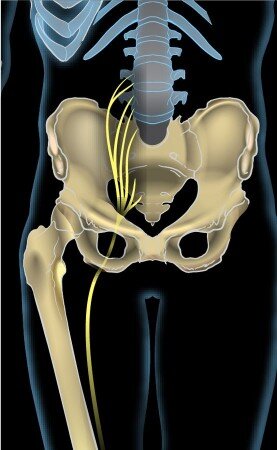I often see patients with concerns of lingering sciatic nerve pain. Some of the time, I see them after they have already been to physical therapy at another facility. They had improved some but the remaining pain won’t go away. For these patients, epidurals often did not resolve their pain. Let’s discuss why they stopped improving and how we help complete their healing.
Early stage of sciatica: cause & treatments
When someone initially feels sciatic nerve pain, it usually begins in one of two ways:
a disc bulge putting pressure on the nerve root
a narrowing or stenosis of the spinal canal putting pressure on the nerve root
The added pressure to the nerve root causes acute inflammation of the nerve and severe pain in the leg. They often find it excruciating. At this stage, taking oral steroids or epidural injection can help (your physician will help you decide what medications are best for you).
Late stage of sciatic: cause & treatments
Patients who come to me with a chronic form of sciatic nerve pain present differently:
Can move around without too much pain
Lingering pain in the legs
Irritated with prolonged sitting, but sometimes standing as well
These symptoms are often due to scar tissue adhesions that form on or around the sciatic nerve after the early inflammation period. Medications do not work well to alleviate this pain because there is not much inflammation in the nerve. The pain is due to nerve tension or lack of nerve mobility. Neural tension responds well to cupping, neural gliding exercises, and strengthening of surrounding musculature.
Patients sometimes find it hard to believe that simple nerve gliding stretches can fix what so many doctors and other providers have not. And indeed it takes a while to stretch out a nerve. But a lot of patients have been amazed with the relief they got through this process.
Understanding WHAT is causing your sciatic nerve pain is key to treating the real cause, and progress towards pain-free activities.


